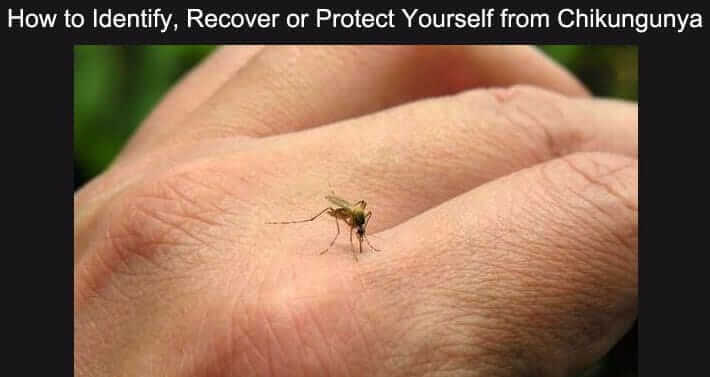Chikungunya is a viral disease that is transmitted to human through mosquito bites. Its virus was first diagnosed during an outbreak in southern Tanzania in 1952. Just like in the case of dengue and malaria, patients suffering from chikungunya also experience mild to severe joint and muscle pains, headache, nausea and fatigue. On the other hand, symptoms that are specifically identified with the disease itself include rashes and sometimes even various neurological, eye and heart complications along with joint pains that could persist even for months or years.
How to Identify, Recover or Protect Yourself from Chikungunya
As of now, there is no known cure or immunization against chikungunya. However, treatments are only done in order to help the patient from the chikungunya-related complications.
Known Signs and Symptoms
Just as mentioned earlier, some chikungunya-related signs and symptoms can be also identified with other mosquito-related diseases such as malaria and dengue. Because of this, chances of doctors giving misdiagnoses are somewhat high. However, there are still some symptoms that are related with chikungunya, symptoms that are specifically listed below:
- Arthritis and other joint-related pains – About seventy percent of patients suffering from chikungunya often complain from joint pains that they experience while having the disease. Joint areas involved are usually wrists, elbows, fingers, shoulders, knees and ankles. Joint pains are mostly frequent during daytime, therefore making it difficult for patients to move freely. The joint pains usually lasts only for at least three weeks, though some reported cases also revealed that it can also persist even after the recovery.
- Skin Rash – According to World Health Organization report, at least half of the patients that suffered from chikungunya have skin rashes that appeared three to four days after having the viral disease. Starting on the arms, the rash usually spreads at some parts of the person’s face down to his or her torso. However, there are no confirmed reports that patients having rashes do suffer from itch.
- Fever – Chikungunya-related fevers usually have temperatures of at least 102 to 105 degrees Fahrenheit or 39 to 40.5 degrees Celsius. Disease reports revealed that the fevers are followed by low-grade fevers after a few days since the virus accumulates and multiplies itself into the patient’s bloodstream before spreading itself to other parts of the body.
- Other Known Symptoms – Depending on the patient, there are other possible symptoms that will appear along with the disease such as muscle, abdominal and back pains, throat discomfort, constipation, headaches and swollen neck lymph nodes.
Treatment
Even if there is no available cure or treatment for chikungunya until now, it definitely doesn’t mean that you’re just going to ignore professional help when it comes to treating the disease-related symptoms. Just like in the case of doctor’s misdiagnosis, the patient’s ignorance and negligence in regards to the viral disease can be very fatal.
Listed below are the things that you must do in case you suspect that you have the symptoms of chikungunya:
- Immediately get medical attention when necessary. If your fever lasts for more than five days and if you have rashes that cover at least half of your torso, make sure that you contact the nearest doctor in your neighborhood. And if you also experience bleeding, let your doctor do an immediate medical examination.
- Cooperate with the necessary tests. You must make sure that you cooperate with the necessary medical procedures after your doctor confirms that you are suffering from chikungunya. Medical procedures usually include periodical blood tests in order to monitor the progress of the virus inside your body. Such tests are necessary in order for doctors to apply necessary treatments of the disease symptoms.
- Get yourself some rest. Rest is needed whenever your body needs energy in order to combat any kind of disease, which is also very applicable in this case. However, make sure that you are resting in an environment that will not aggravate your disease symptoms.
- Take pain relievers whenever necessary. Since joint pains are inevitable, it is recommended that you take pain medication such as paracetamol or acetaminophen and take lots of water every day. If you’re going to take ibuprofen or aspirin in case that paracetamol or acetaminophen isn’t available in your local drugstore, make sure that your doctor has ruled out the possibility of you having dengue instead of chikungunya.
- Try Herbal Remedies as an alternative. Aside from the fact that they are cheaper and contain no side effects, using herbal medicines when treating chikungunya-related symptoms as alternative for prescription medicines are very helpful. However, make sure that you consult your attending physician or doctor before using these.
Disease Prevention
Due to the fact that chikungunya is a viral disease that is transmitted through mosquito bites, it is very necessary to make sure that there are no possible breeding places for mosquitoes inside your house or the surrounding area. In some cases, the local government will fumigate mosquito-infested areas where cases of chikungunya and other mosquito-related diseases are reported.
